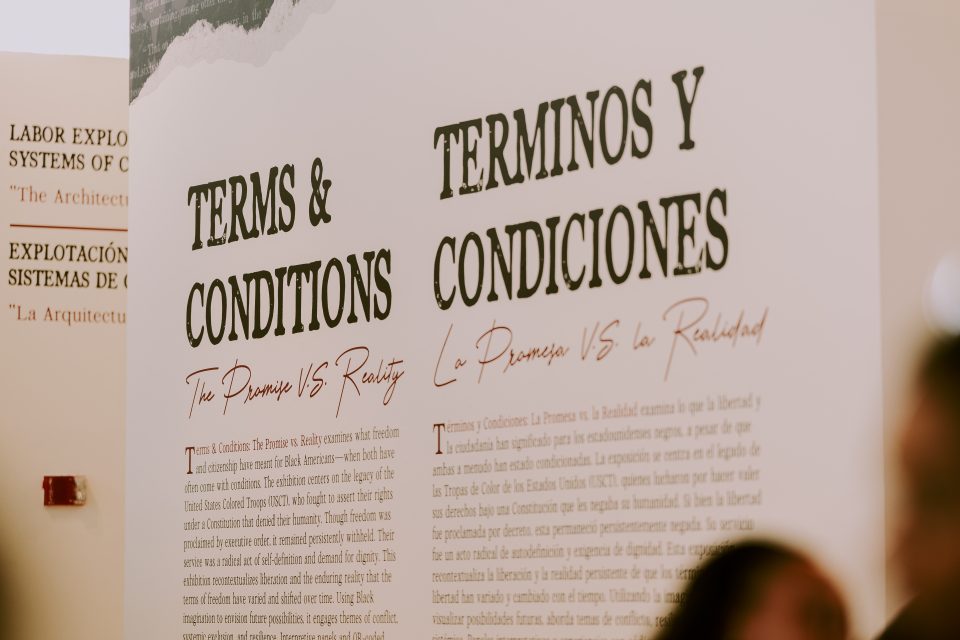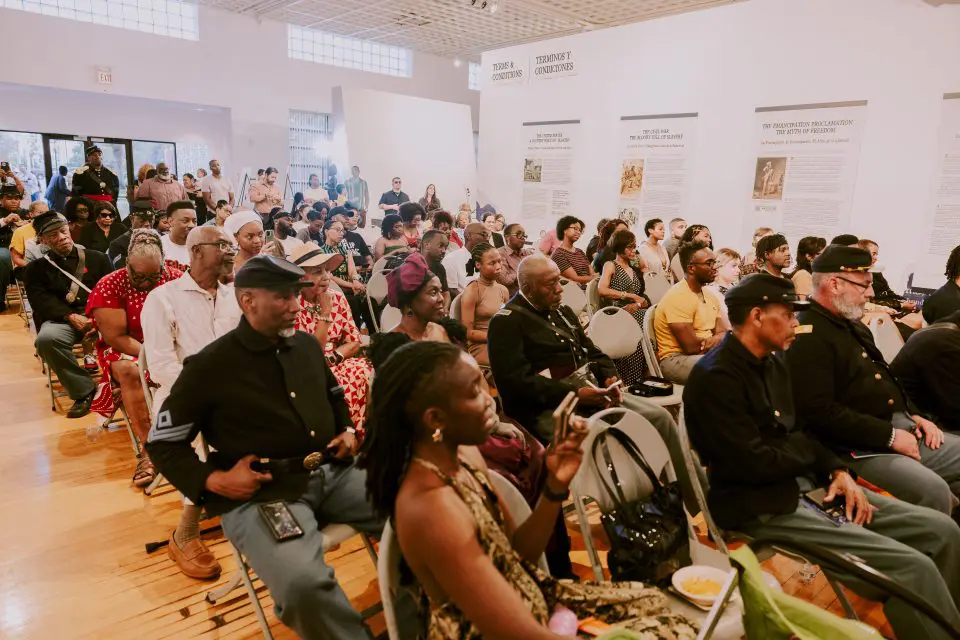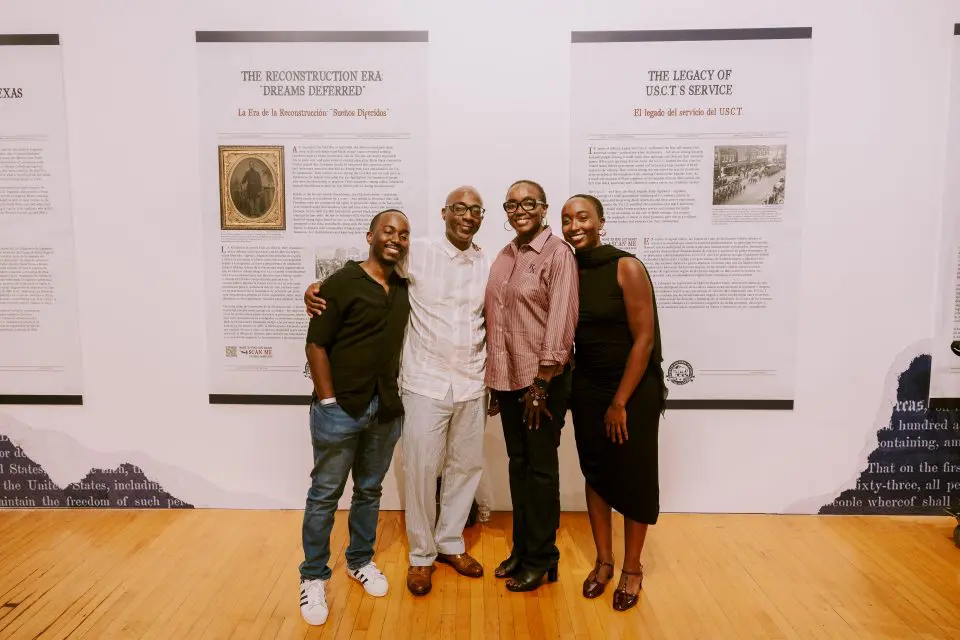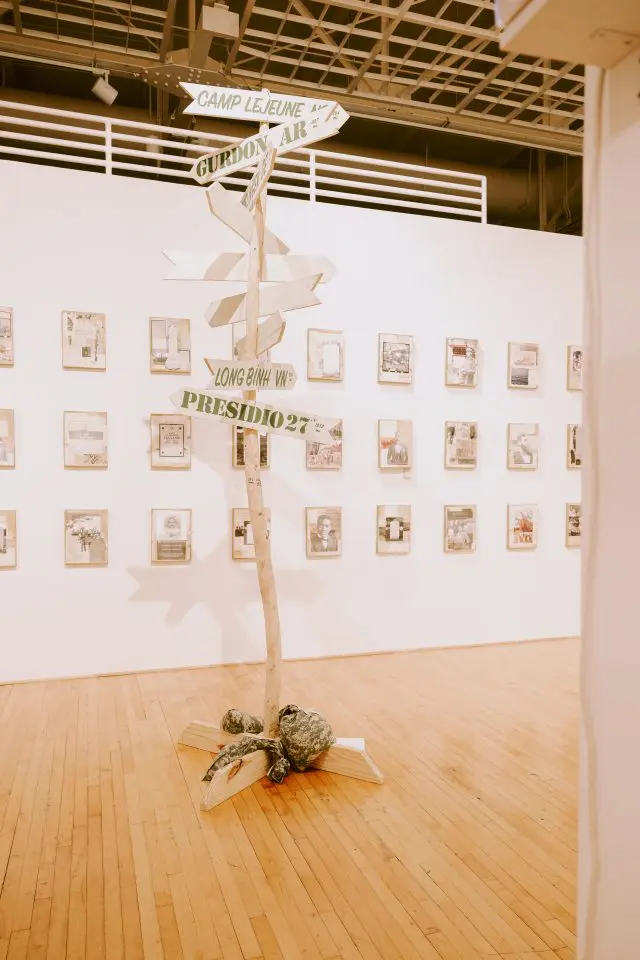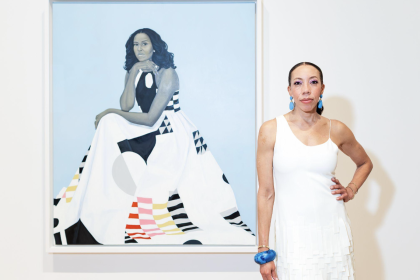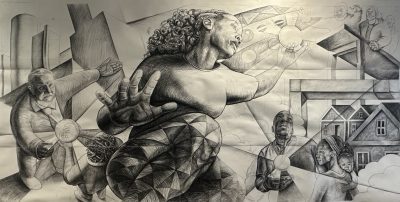When Phillip Pyle II reimagines an 1863 regimental flag painted by David Bustill Bowser, he’s not just updating history. He’s interrogating the conditional nature of Black freedom in America. The Houston-based visual artist’s Sic Semper Tyrannis, featured in the Buffalo Soldiers National Museum’s exhibition “Terms & Conditions: The Promise vs. Reality,” places a Black soldier from the United States Colored Troops in a position of ultimate power over a fallen Confederate, asking viewers to confront what liberation truly means when it comes with endless caveats.
By adding a contemporary red cap to Bowser’s original composition, Pyle creates a visual dialogue between the USCT’s fight for “freedom proclaimed yet persistently withheld” and today’s ongoing struggles for racial justice. His work embodies the exhibition’s central question: what does it mean to be free when the conditions still vary? Drawing from his extensive background in commercial advertising, sports culture, and hip-hop aesthetics, Pyle joins eleven other Black artists in exploring how generations of Black Americans have navigated exclusions and redefined liberation outside systemic confines. In this interview, he reveals how his piece serves as both historical reclamation and contemporary critique, honoring the USCT’s revolutionary act of self-definition while challenging viewers to examine the fine print of freedom that continues to shape American life.
Can you describe your artwork featured in the exhibition and walk us through your creative process?
The Sic Semper Tyrannis is a 60”x40” cotton piece that reimagines the 22nd Regiment’s flag, painted initially by David Bustill Bowser. I updated this historic flag by retaining the powerful imagery of a Black soldier poised to decide the fate of a fallen Confederate. The Confederate has dropped his flag and cast aside his sword. I modernized the piece by adding a contemporary red cap—infamously symbolic of current political opposition—blending historical symbolism with contemporary critique.
How does your piece speak to the meaning and legacy of Juneteenth?
The piece underscores African American agency in securing freedom, echoing the themes of Juneteenth—the delayed liberation of enslaved Black people. The empowered Black soldier symbolizes both resistance and autonomy, asserting that the fate of oppression lies in the hands of the oppressed. By highlighting this pivotal choice, the artwork aligns with Juneteenth’s legacy of self-determination and delayed justice, which finally arrives through Black perseverance.
What role do you believe art plays in preserving and communicating Black culture and history?
Through Sic Semper Tyrannis art serves as both archive and protest. It reclaims overlooked Black artistic contributions—like Bowser’s—and places them in dialogue with contemporary struggles. Art like this preserves cultural memory, honors unsung heroes, and critiques dominant narratives. It becomes a bridge connecting past, present, and future for Black identity and legacy.
How does your work reflect or challenge the social realities we live in today?
By inserting the modern red cap—a potent political symbol—into a historical setting, the piece directly challenges the continuance of white supremacy and its modern manifestations. The juxtaposition of past Confederate symbolism with current political iconography reflects how racial tensions persist, asking viewers to reckon with the repetition of history and the active role of Black agency in shaping or ending it.
Do you see your piece engaging with themes of Afrofuturism or reimagining Black futures?
Yes, the piece reimagines history through a speculative lens, where Black power determines the outcome. This speculative rewriting of power dynamics, placing decision-making in the hands of the oppressed, aligns with Afrofuturist ideals. It honors the past and visualizes a future where Black agency is central to justice and transformation.
What personal stories or emotions did you draw from when creating this work?
Elevating Bowser’s legacy and integrating a contemporary symbol suggests a deep personal engagement with the cyclical nature of oppression, resistance, and identity. The decision to focus on the unresolved moment—where the tyrant’s fate is undecided—reflects a nuanced emotional stance: one of contemplation, power, and unresolved tension rooted in lived Black experiences.
